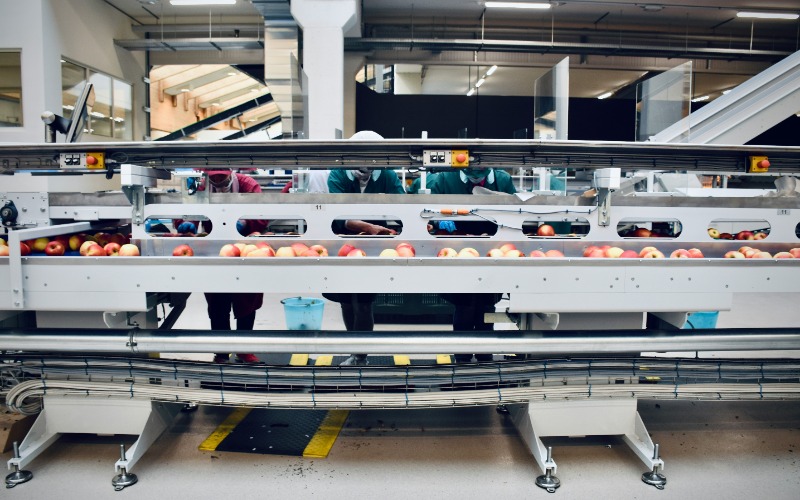Our food consumption habits have evolved significantly since the beginning of the century. While technology is not typically associated with food discussions, there is a noticeable shift as more people rely on subscription boxes, delivery apps, and meal-prep services. The food sector is leveraging technological advancements to enhance supply chain manufacturing procedures and combat malnutrition from food scarcity. Here are the multiple ways technology is disrupting and transforming the food industry.
Demand for Nutritious and Safe Food
Although food production is rapidly increasing, it does not always ensure customer safety. Manufacturers must focus on high quality. This explains the rise in regulations within the food and beverage sector.
With recent EU food regulations and the rising demand for healthy and “clean” products, food and beverage manufacturers face new challenges. How can they maintain the highest quality standards without damaging their brand’s image? The latest technological trends seem to offer the best solutions.
A recent ING report indicates that consumers expect healthier food options on store shelves in the future. According to the report, 43% of respondents are seeking healthy choices, while 18% are interested in eco-friendly products.
Packaging and Waste
Consumers increasingly prioritize the consumption of healthy and sustainable products. They are keen on labels and the exclusion of harmful ingredients. In today’s age of high social media scrutiny, companies are finding it challenging to overlook such concerns. Many businesses are leveraging technology to adopt eco-friendly practices. Using robotics and digitalization, the food industry is actively seeking alternatives to detrimental materials like plastics for packaging.
Integrating technology in packaging extends to innovative approaches such as edible packaging, micro packaging, and packaging that combats bacterial growth. Consumers are also deeply interested in companies’ sourcing practices and waste management methods.
Alarmingly, 40% of America’s food supply is wasted annually. However, technological interventions are underway to minimize this wastage and repurpose surplus food effectively. Companies like TDI Packsys offer inspection and automated packaging equipment solutions that help minimize food waste and ensure packaging integrity.
Looking Back
Traditionally, restaurants have focused their primary efforts on upgrading and updating their back-of-house technology with significant changes. This could involve installing new computers, point-of-sale systems, or investing in modern tools to enhance food quality, all deemed necessary enhancements.
These changes directly impacted customers, providing them with benefits such as more accurate receipts, quicker service, and improved food flavor. However, it’s worth noting that these changes and technological upgrades were not initially customer-centric.
Employees were the first to utilize and experience the benefits of the new technology. The positive effects on customers were simply an incidental outcome that many restaurants found satisfactory.
Collecting Data
The methods of data collection and utilization have been completely transformed by technological advancements, allowing for real-time tracking from the farm to the consumer. Data collection begins with tracking systems and soil testing. GPS-equipped drones monitor and detect pests that could damage or infect crops. This technology enables farmers to quickly identify and address issues, helping protect more crops. With constant monitoring, farmers receive real-time data and can make necessary adjustments promptly.
Harvesting robots can pick only ripe produce by taking pictures of each developing product. As this data is recorded, the harvester determines when each item is ripe and ready for picking. Data collection remains essential beyond the initial production stages; it is also critical during transportation to ensure freshness and reduce food waste.
Robots and Machines
In the food industry, robots and machines make production faster and more efficient while reducing costs, labor, and worker injuries. With machine learning, these machines can better manage land and water use for different crops and farms based on conditions. This helps reduce the industry’s freshwater use.
Food harvesting robots are becoming more common because they can do the work of many workers, saving time and keeping workers safe from bad weather like wildfires. Traditional forklifts are being replaced by automated guided vehicles that can load and unload trucks and move large items, often needing fewer workers. These vehicles can also work longer in freezing conditions like cold storage rooms.
Reducing Food Waste
Each year, a staggering 1.3 billion tons of food are wasted. However, the Internet of Things (IoT) is positioned to significantly lower this figure by continuously overseeing the state and temperature of food, promptly notifying supervisors and managers of any irregularities.
‘Smart Farming,’ built upon IoT principles, also aids farmers in optimizing efficiency to minimize food wastage. Various tools are utilized for this purpose, from advanced livestock tracking devices, agriculture sensors to intelligent greenhouses and agricultural drones.
Endnote
Given the array of technological progress, there are myriad possibilities for altering food production methods significantly. The continuous evolution of technology holds the potential to address global hunger and tackle our waste dilemma.











